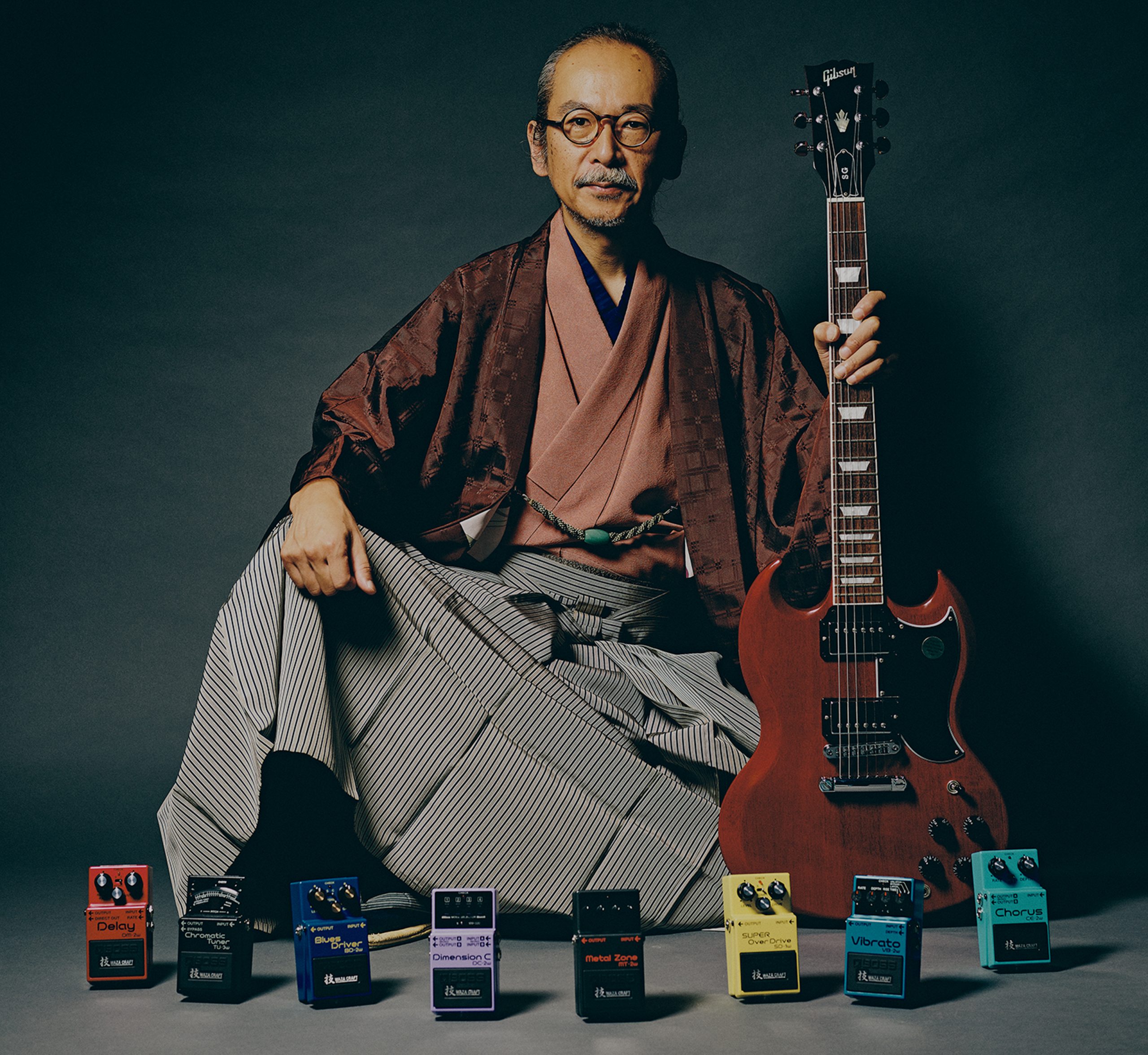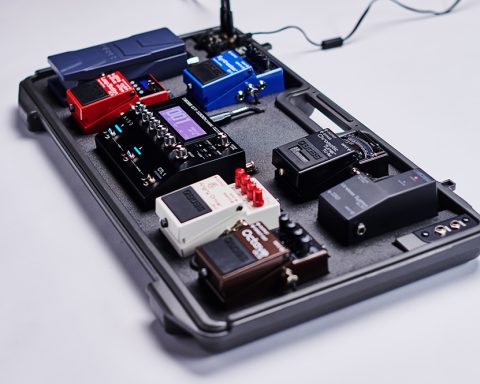Waza Craft pedals are the high-end, premium offerings of the BOSS compact line. This treatment is an honor reserved for iconic pedals in the BOSS echelon. It gives them new life with analog components and hot-rodded modes boasting custom functionality. Waza Craft’s reimagined pedals range from the rare VB-2 Vibrato to the prized DC-2 Dimension and HM-2 Heavy Metal.
What is Waza Craft?
In 2014, BOSS introduced Waza-Craft pedals to showcase best-in-class engineering capabilities. Focusing on legendary units from the BOSS back catalog, the engineers dig deep into the technology, squeezing out even more tone and functionality. “We never make any compromises to make the best selection,” BOSS engineers explain. “On top of good sound, stability and low noise are just as important, so we only use components we can definitely trust.”
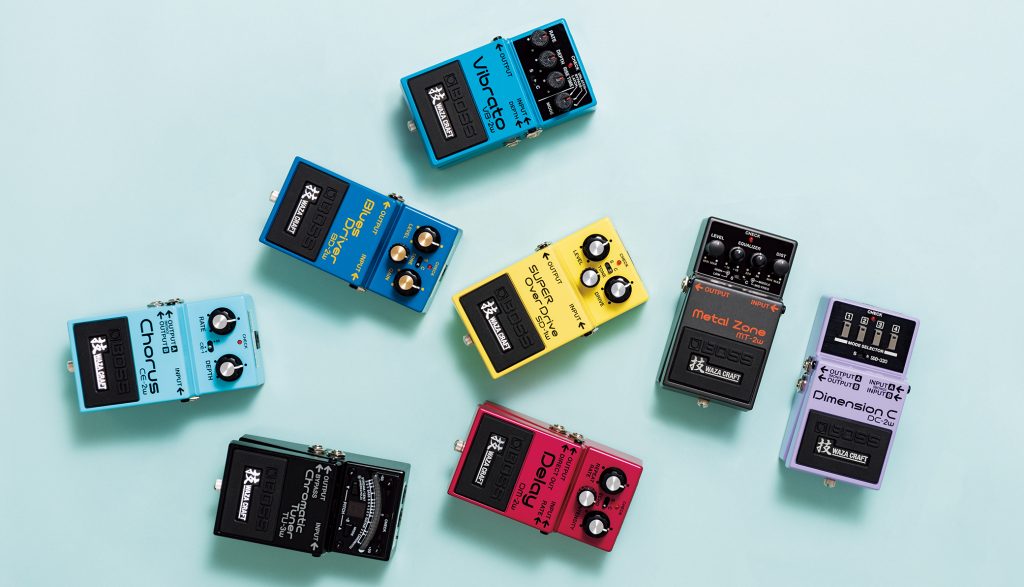
What Makes Waza Craft Unique?
Each Waza Craft pedal is a complete redesign of the original circuits. As the original designers, BOSS is in the best position to take these pedals in new directions. For example, with the BD-2W, swapping components was only the starting point. As the design progressed, it evolved into a new, fully discrete circuit. This allowed the engineers to select and optimize every component. Finally, the result was the best tone for both Standard and Custom modes.
"This treatment is an honor reserved for iconic pedals in the BOSS echelon. It gives them
new life."
Another example is the CE-2W. It incorporates both the classic CE-2 sound, as well as the prized chorus and vibrato sounds of the CE-1. The CE-1 arrived in 1976, so as one might expect, many original components are no longer in production. BOSS used its deep understanding of the original schematics to completely redesign the circuit from scratch. In essence, the pedal utilizes modern components while ensuring authentic tone.
"Waza represents the pinnacle of BOSS design and craftsmanship."
What Does Waza Mean?
BOSS builds all Waza Craft pedals in Japan, and all carry the kanji character Waza / 技, the Japanese term for art and technique. Waza represents the pinnacle of BOSS design and craftsmanship. Ultimately, the line blends reverence for history with a passion for bleeding-edge technology. Explore the entire line below.
HM-2W
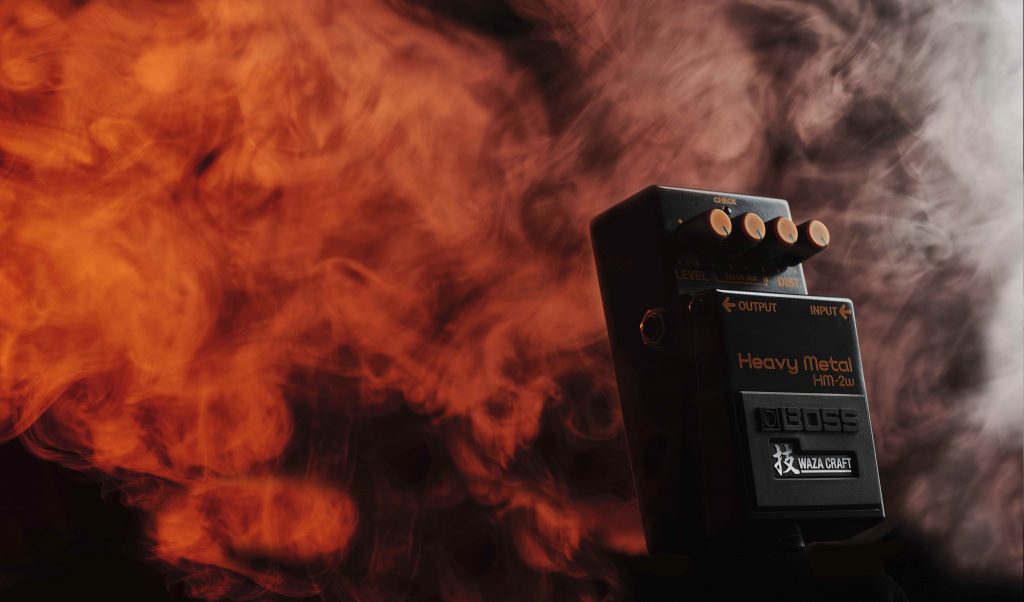
The HM-2W has a rich pedigree. Its predecessor, the HM-2, helped define the sound of an entire movement. The brutal blast of Swedish death metal is due in no small part to the pedal’s extreme tone. The HM-2W’s Standard mode improves on the HM-2 with a lower noise floor and +3dB Level higher than the original. Moreover, Custom mode takes the classic “Swedish Chainsaw” sound to a whole new level, with a more aggressive, modern attack.
“The engineers took the progression of technology and playing environments of the last three decades into account,” shares Colin Scott of CSGuitars in his deep dive into the pedal. “A grinding, aggressive, churning sound with curves in all the right places to cut through anything.”
TB-2W
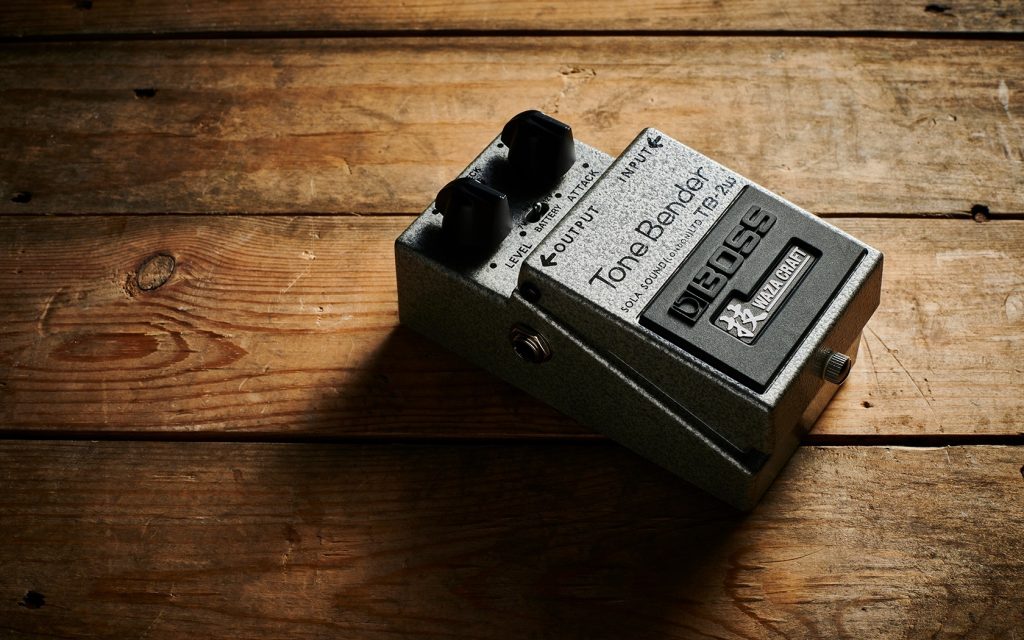
The TB-2W represents a partnership of two icons of the pedal world: Sola Sound and BOSS. Icons like Jimmy Page and Mick Ronson favored the legendary Tone Bender, and mutual admiration between the brands led to the unique collaboration. BOSS is committed to fully understanding the design and heritage of any pedal that bears the Waza Craft name. As a result, the engineers went straight to the source, collaborating with Sola Sound to reimagine the Tone Bender MkII.
BOSS engineers studied a “masterpiece” reference Tone Bender MkII (serial #500) to create the limited edition Waza Craft TB-2W. It features hand-selected, rare germanium transistors, a 3-way voltage selector, and selectable true/buffered bypass. It also has a refined circuit design for ultra-consistent performance.
MT-2W
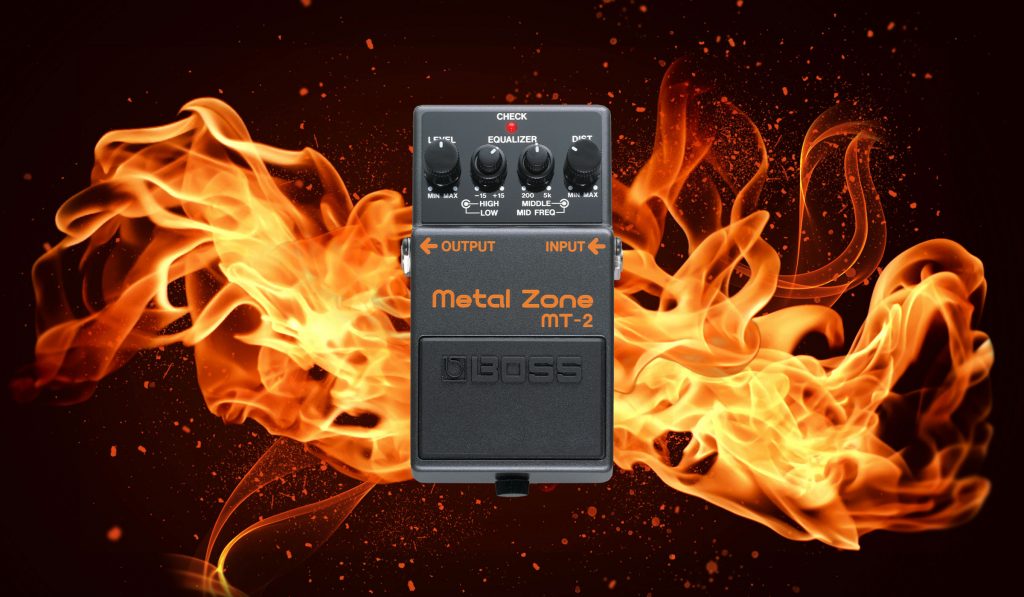
The crushing high-gain classic is reborn in Waza form. Standard mode features a lower noise floor and optimized mid-EQ. Custom mode unlocks a completely distinct new gain stage, designed from the ground up for the modern metal player.
“The MT-2 is very popular and still in production nearly three decades after its release in 1991,” the engineers explain. “By releasing the MT-2W in the Waza Craft lineup, we thought it would be a great chance for people to revisit this pedal—not only the brushed-up MT-2 tone in Standard mode but also the versatile and wide-ranging Custom mode.”
DC-2W
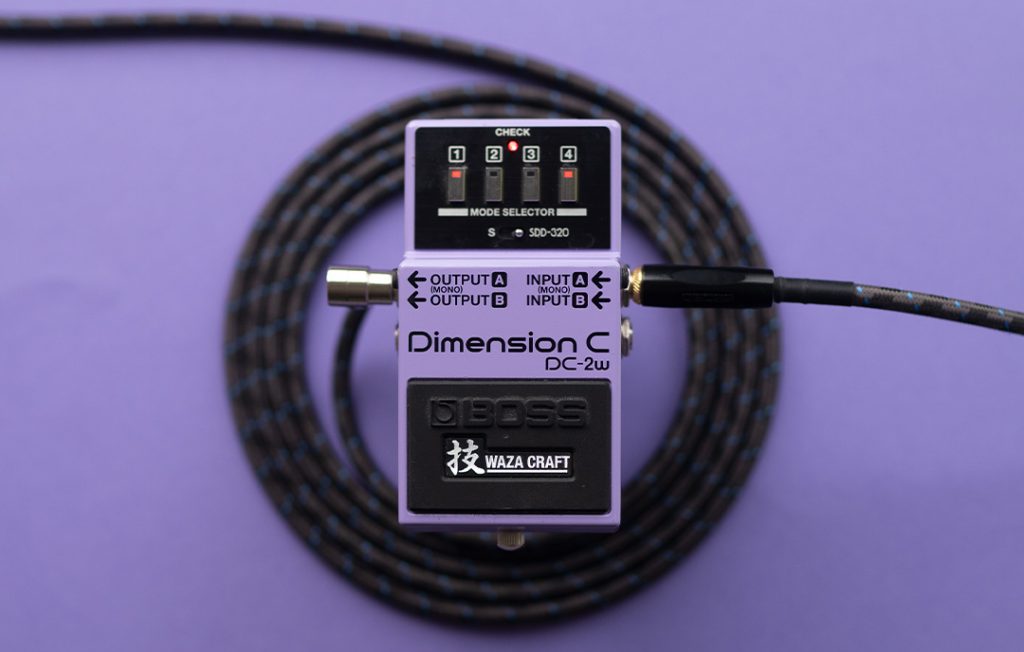
Revered by both players and producers, the Dimension C’s unique spatial processing magically enhances the width and depth of any sound. “The Dimension is a one-off effect that enhances tonal space,” the engineering team explains. “We thought this would be very useful for the current music scene and wanted more and more people to experience this unique creation.”
Standard mode on the DC-2W recreates the classic Dimension C spatial enhancing experience. The SDD-320 mode reproduces the vintage Roland SDD-320 Dimension D, a legendary rack effect heard on countless hit records. The designers combined the all-analog signal path with modern electronic switching. All in all, the result is 20 total sounds compared to four on the original pedal.
TU-3W
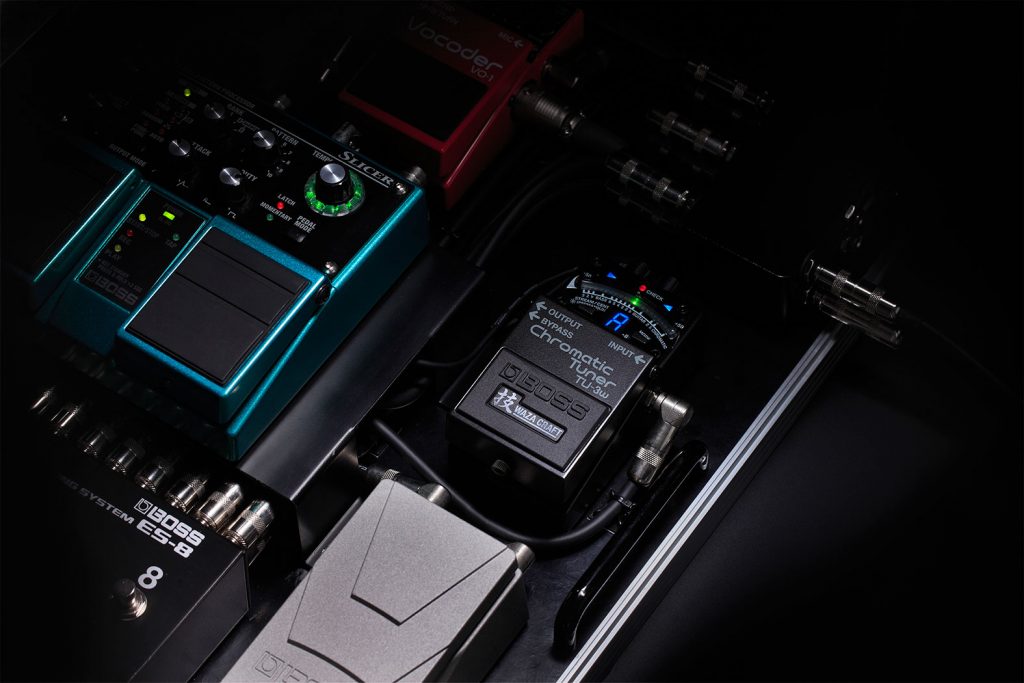
It’s hard to overstate the ubiquity of the TU-2. The classic appears on pedalboards the world over. With the TU-3W, BOSS brings Waza Craft mojo to the world’s leading stompbox tuner. In keeping with Waza tradition, the pedal’s storied functionality is enhanced with next-level skill and craftsmanship.
Far more than a recolored TU-3, the TU-3W features redesigned circuitry with a premium buffer. Additionally, it features selectable true-bypass operation. This allows for the most transparent audio pass-through in every setup.
CE-2W
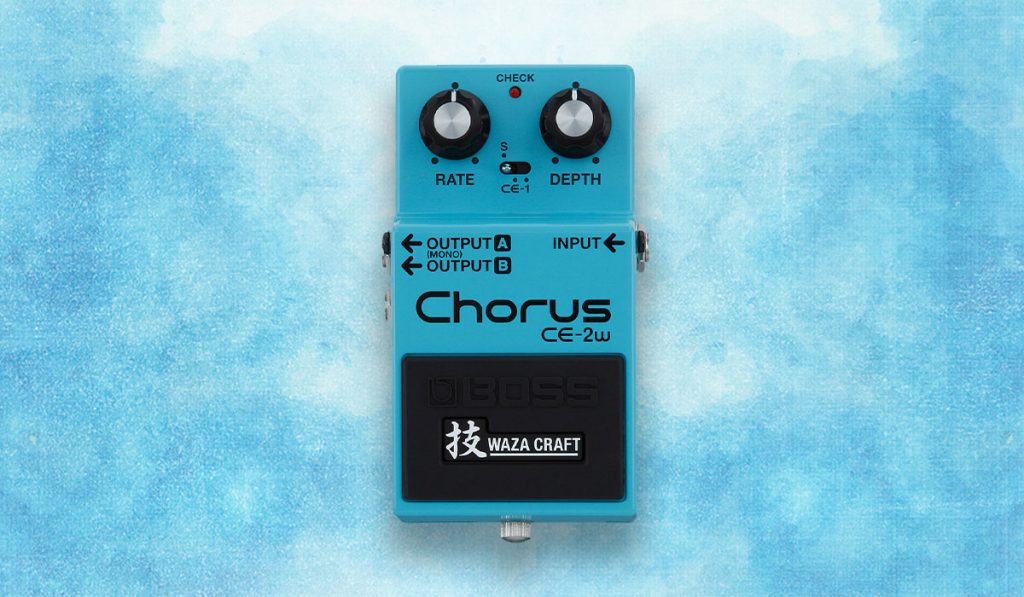
The distinctive tone of the CE-2 chorus is a staple of ’80s radio hits across a myriad of genres. In addition to authentically producing the CE-2’s mono-only sound, the CE-2W makes the classic pedal’s soft modulated tone available in stereo for the first time.
Standard mode recreates the highly-prized CE-2 and improves on it with stereo output. CE-1 mode authentically reproduces the iconic chorus and vibrato sounds of the world’s first chorus pedal. See why acts from the Cure to Nirvana favored its dreamy swirl.
VB-2W
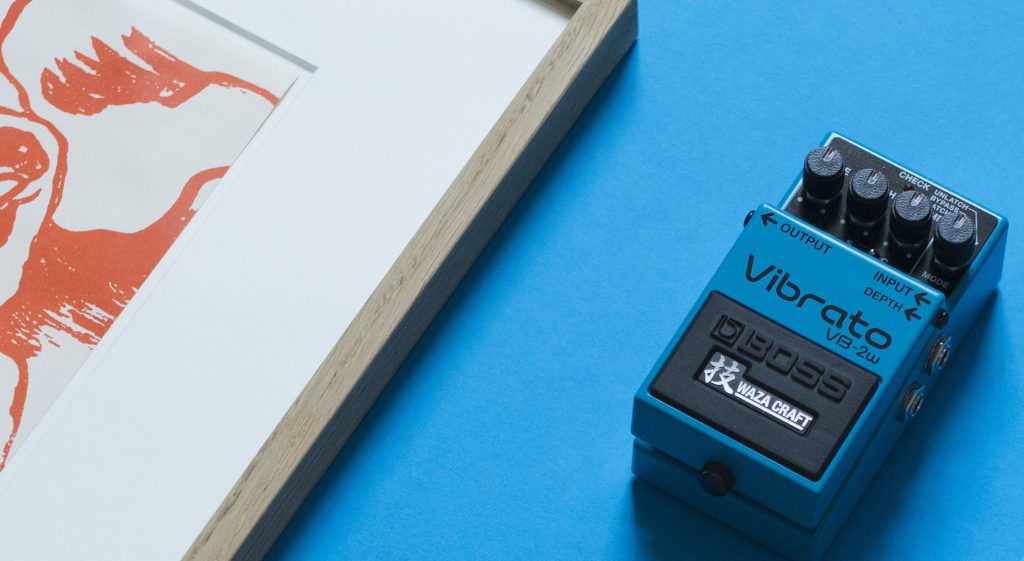
The forward-thinking VB-2 Vibrato has been widely rediscovered by modern players looking to create unique guitar textures with stompbox effects. In its Waza Craft incarnation, the VB-2W retains the storied vibe but enhances the sound in dramatic ways.
Standard mode reproduces the true, pitch-shifted vibrato of the original—one of the rarest of all BOSS pedals. The VB-2W’s Custom mode features a new vibrato sound with unique filter wave. In addition, Unlatch mode allows real-time, momentary activation for enhanced expression.
BD-2W

Released in the mid-’90s, the BD-2 Blues Driver delivered the creamy, yet crunchy sound associated with great blues guitar. Yet that wasn’t all it could do. This versatile pedal provided instant access to rich overdrive that worked in a variety of settings.
The Waza Craft version of the pedal features all-analog, discrete circuitry, redesigned from the ground up for exceptional tone and dynamic touch response. Plus, Custom mode on the BD-2W delivers an expanded tonal range, with increased body and sustain
SD-1W
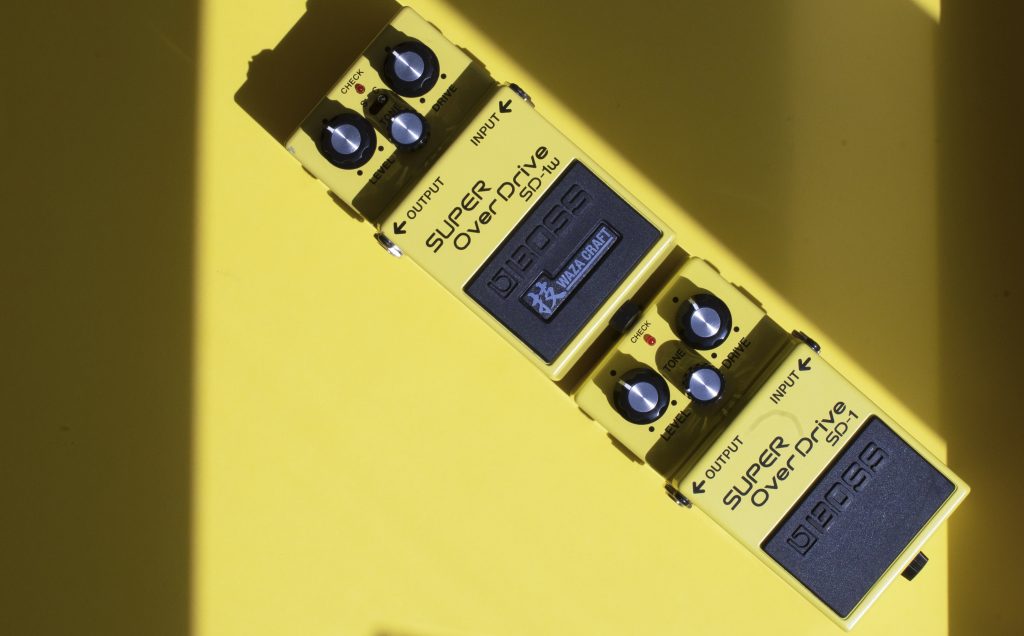
Introduced in 1981, the SD-1 Super Overdrive is beloved by guitarists across genres. The iconic yellow unit recently celebrated its 40th anniversary. Indeed, its history spans eras—from the roots of rock to the present day. In his history of the pedal, Michael Molenda writes, “The SD-1’s rich roar preserves a player’s most subtle dynamic nuances. As a result, many guitarists rate it as one of the best all-around BOSS overdrive boxes.”
The Waza Craft version builds on the pedal’s outstanding legacy. Standard mode on the SD-1W redesigns the pioneering amp-like asymmetric clipping of the original with all-analog discrete circuitry. As a result, this achieves enhanced clarity and a lower noise floor. Custom mode delivers thicker low-mids and more gain on tap.
DM-2W
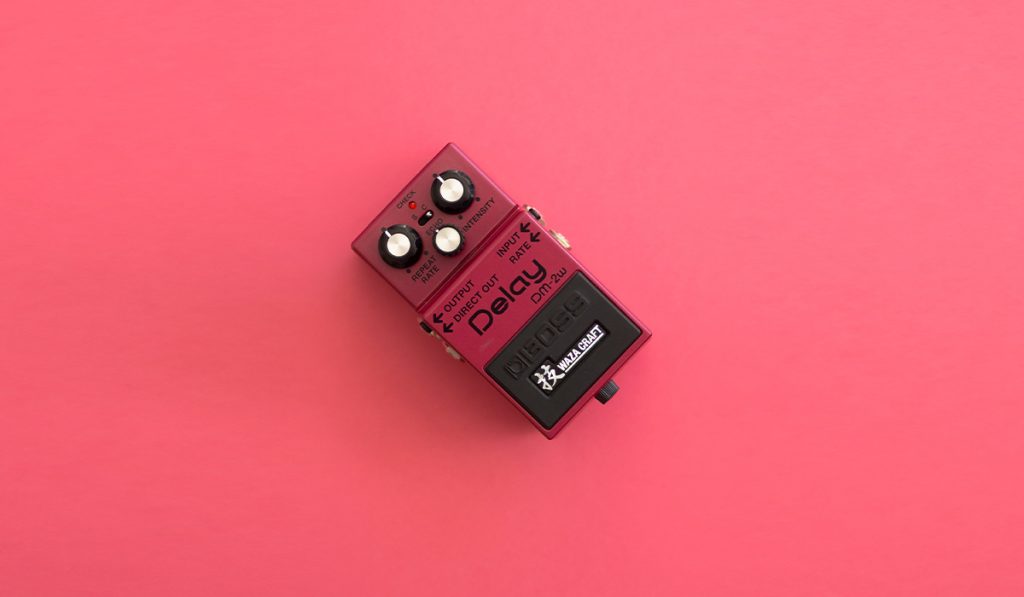
From vintage rockabilly slapback to the ambient washes, the DM-2 remains a classic for good reason. It’s no surprise that the pedal is only richer sounding and more texturally flexible in Waza Craft form.
Standard mode on the DM-2W captures the classic “bucket brigade” delay sound of the original DM-2. That classic is famous for its gritty, dark, analog repeats which sit perfectly in the mix without being overpowering. Custom mode features delay repeats with a touch more clarity. Not only that, but it also more than doubles the available delay time.
FZ-1W
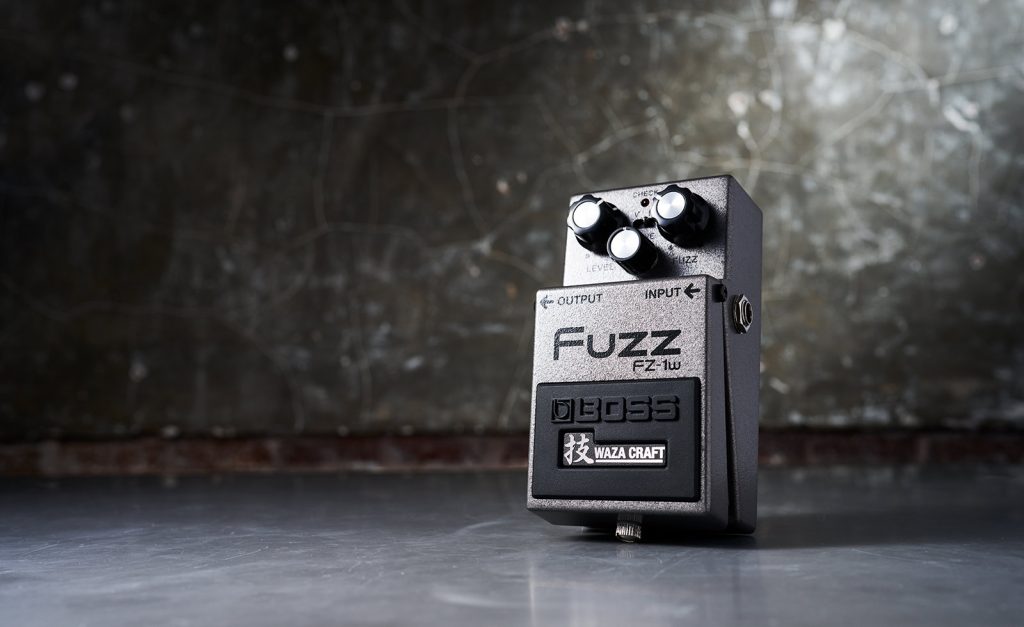
The powerful FZ-1W lets fuzz fans enjoy all the excellent musical characteristics of vintage fuzz without any downsides. While inspired by historic circuits, this pedal offers a whole new approach. With superb silicon transistors, the FZ-1W boasts authentic tone and response while maintaining stable performance in any situation.
When using the FZ-1W’s Vintage mode, the sound character is raspy and assertive without harshness. Modern mode delivers a refined, versatile fuzz voice with a focused midrange and fatter tone, making it ideal for all current music styles.
DS-1W
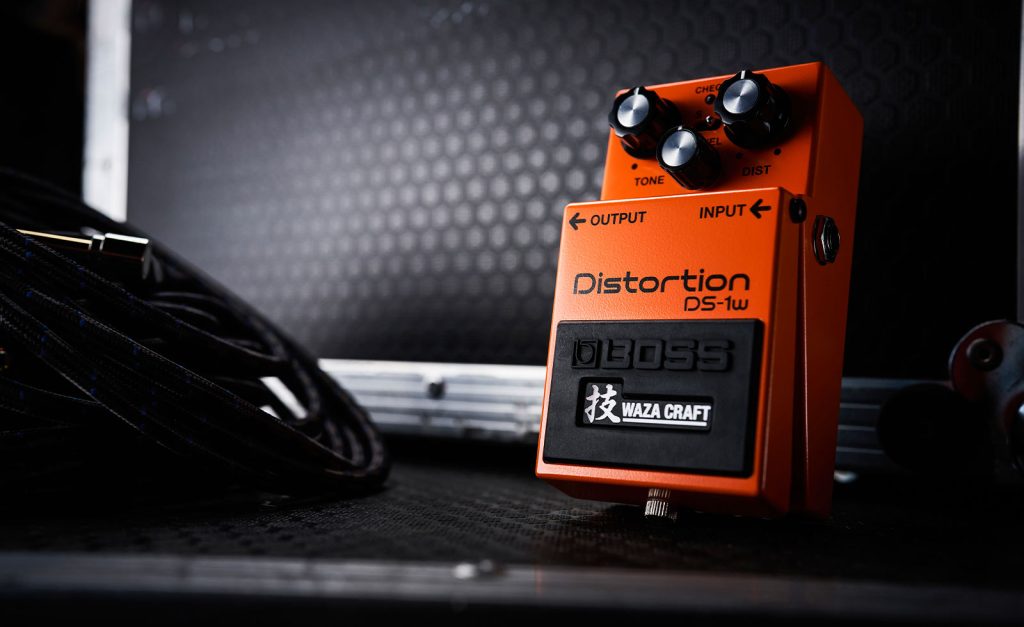
The DS-1 changed the guitar world, introducing players to a new high-gain sound with rich harmonic overtones. Featuring two modes and a discrete all-analog circuit design, the DS-1W expands the DS-1 experience.
Standard mode on the DS-1W delivers the authentic sound of the original in every way. Its innovative two-stage gain circuit is a critical part of the fullness and definition that so many guitarists love about the original. Custom mode presents a unique new distortion voice while retaining the singular DS-1 personality and edge.
BP-1W
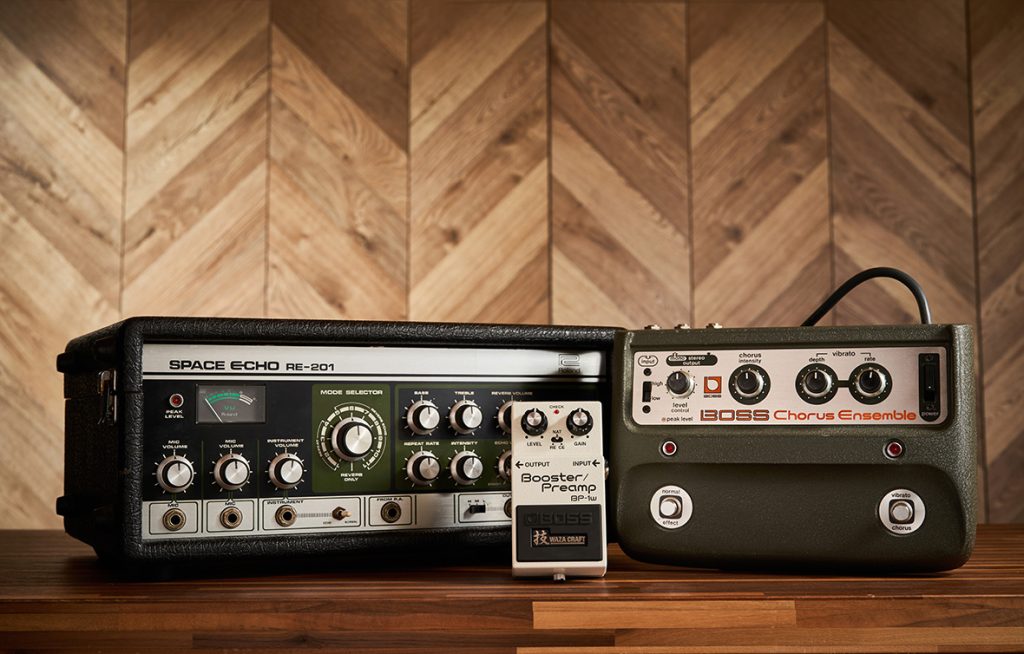
Revered by musicians worldwide, the BOSS CE-1 Chorus Ensemble and RE-201 Space Echo possess a secret weapon in their variable analog preamp circuitry. As part of the Waza Craft line, the BOSS BP-1W captures these two legendary preamp tones in stompbox form.
The three BP-1W modes offer a wealth of tonal options for the discriminating player. CE mode captures the Chorus Ensemble preamp tone, while RE mode reproduces the feel of RE-201 circuitry. Finally, NAT mode has a natural voice with minimal coloration. Users can also choose between a standard and vintage buffer.
